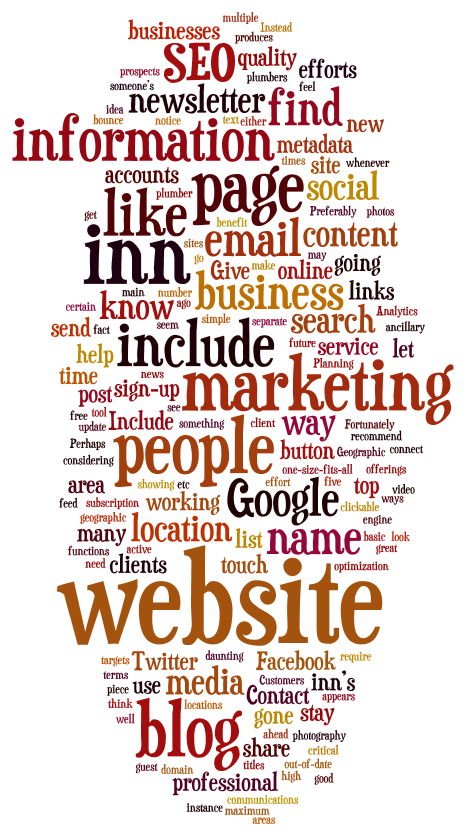 Your website, built five years ago by a professional (or someone’s cousin for free), is showing its age. You’re embarrassed to send clients there. It has out-of-date information. And nobody can find it on Google. Perhaps you feel your website is fine because, hey, you fill your guest rooms each season, but you notice that your Google Analytics bounce rate has gone up or your visits to the site have gone down.
Your website, built five years ago by a professional (or someone’s cousin for free), is showing its age. You’re embarrassed to send clients there. It has out-of-date information. And nobody can find it on Google. Perhaps you feel your website is fine because, hey, you fill your guest rooms each season, but you notice that your Google Analytics bounce rate has gone up or your visits to the site have gone down.
Remember that while your aging website has been doing its job, your competition has been working diligently on their marketing efforts, many of whom have beautiful new, high functioning websites.
We’re just going to go ahead and rip the band-aid off and say it:
It’s time to update your website.
Planning a new website design for your inn can seem daunting. There isn’t a one-size-fits-all solution, but there are a few basic functions and content areas you should include to make it an effective marketing tool.
1. Contact information on every single page
This seems simple, but small businesses miss this. Include the phone number you want people to call for inquiries. Preferably at the top of each page. Include a clickable “email us!” button that either opens an email client or links to your contact form.
2. A Blog
All social media marketing and other online marketing requires quality content. So if you’re considering any online marketing effort, you should start with a blog. To get maximum SEO benefit, your blog should be listed under your domain (something like www.yourinn/blog) instead of off-site through a service like Blogger.com. A blog can help your business in so many ways that this will require a separate blog post on the subject.
Some of the main benefits include:
- Search engine optimization (SEO)
- A communications channel for your business that produces content shareable on social sites like Facebook and Twitter.
- A great way to establish your business as a resource in your area and a way to connect with your guest (past, present and future).
3. An SEO strategy that targets your inn and its ancillary services
The people who know name of your inn can find your website. So optimizing your site so that people can find you through Google when they search “your inn’s name” isn’t the most critical piece. Of course you should include your company name on your website and in the metadata, but the fact is that your inn’s name is going to be on your website multiple times, and therefor your inn probably can’t help but be found on Google. Instead, focus on terms that people who may not know your business are searching for.
4. Geographic information in your SEO efforts
For instance, if you need a plumber, you might search “plumbers in Seattle” This is why you should use your location in page titles and other metadata as well as in the text that appears on your website.
5. Photos & video of your inn, your offerings, yourself and your staff
Customers like pictures. And they like to see that you know what you’re doing. Give them top quality photos to look at. We recommend working with a professional photographer experienced in location based photography.
6. A newsletter sign-up
Give people a way to stay in touch with your inn such as a newsletter sign-up. This will let you share information about your inn through email marketing. Yes, you can certainly send out a newsletter by email each month, but you can also use this list to share information you think your guests and prospects will find valuable whenever you have it. If you have a blog or news page, an RSS feed subscription button is another good idea. This will let you stay in touch with your clients each time you add a blog post.
7. Social media accounts
If you’re active in social media, with Facebook, Twitter LinkedIn, etc., include a page, a section on the Contact page, or in the footer of your website where you list which accounts you have with links to each them.
